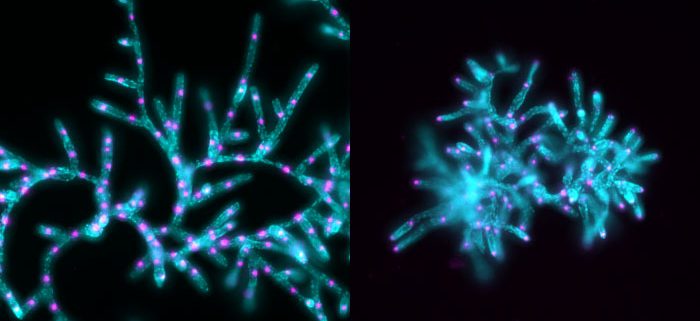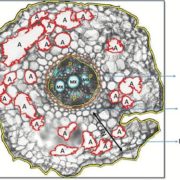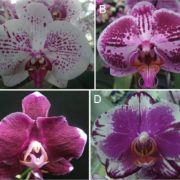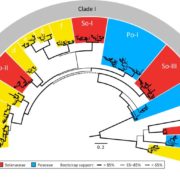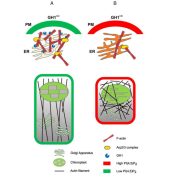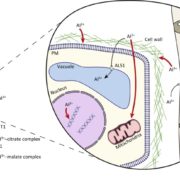A New Nuclear Transporter
Yamada and Goshisma identify a nuclear transporter that controls the position of the nucleus during cell growth in plants https://doi.org/10.1105/tpc.18.00038.
Background: Transportation of cellular components to appropriate locations for their activity is a critical aspect of cell function. Microtubule cytoskeleton and microtubule-based motor proteins drive this transportation process. In animal cells, the motor proteins kinesin and dynein attach to cargos and “walk” along the microtubules; kinesin moves toward microtubule plus ends, whereas dynein moves toward the opposite minus end, facilitating the directional transport of cellular components. Interestingly, land plants have lost dynein genes during evolution, and how they execute microtubule-based transport without dynein was unknown. We hypothesised that kinesin-14, a specific subclass of the kinesin superfamily, might be the motor that acts like dynein in plants, as kinesin-14 possesses minus-end-directed motility, albeit much weaker than dynein.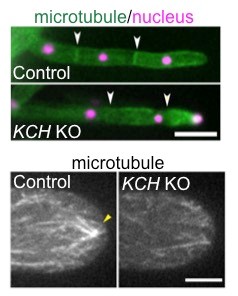
Question: We addressed whether kinesin-14 actually transports cellular components in plants, through comprehensive functional analysis of kinesin-14s in the moss Physcomitrella patens.
Findings: We identified KCH, a kinesin-14 protein that is well conserved in plant species, as a microtubule minus-end-directed nuclear transporter. In the absence of KCH, the nucleus was abnormally positioned in moss cells. Moreover, we observed that the cell growth rate slowed drastically in the absence of KCH. At the apical tip of growing cells, microtubule plus ends coalesce with actin filaments and form a stable focus where KCH is localized. However, the KCH knockout line did not form microtubule focal points persistently at the cell tip. These results suggest that KCH functions not only as a minus-end-directed transporter of the nucleus but is also a microtubule cross-linker that promotes tip growth in moss. Interestingly, both of these functions are reported for dynein in animals.
Next steps: How KCH interacts with the nucleus and also cross-links microtubules (and possibly also actin) remains unanswered. Elucidation of the molecular mechanism underlying these interactions is a future challenge.
Yamada, M., and Goshima, G. (2018) KCH kinesin drives nuclear transport and cytoskeletal coalescence for tip cell growth. Plant Cell. https://doi.org/10.1105/tpc.18.00038.


